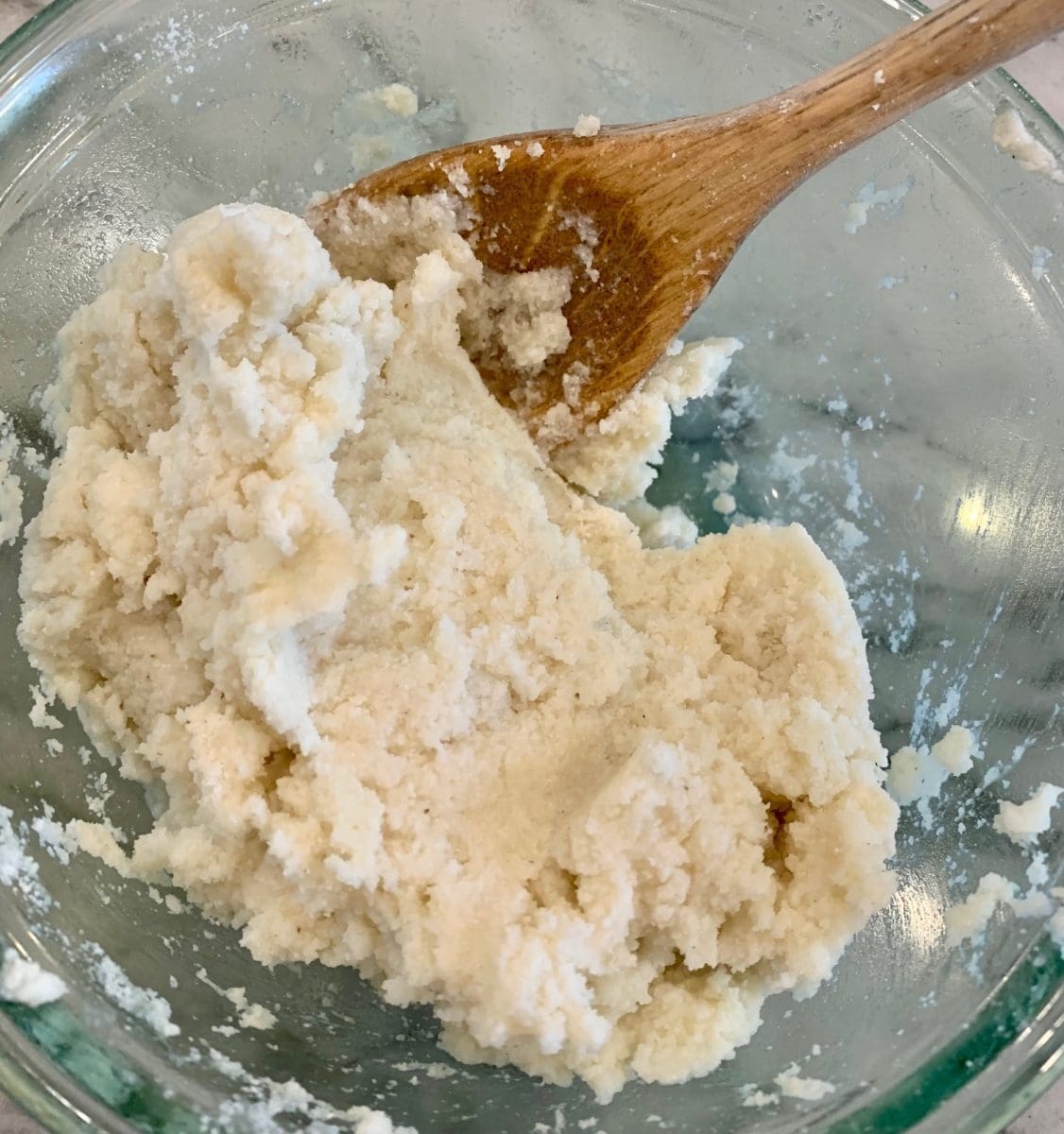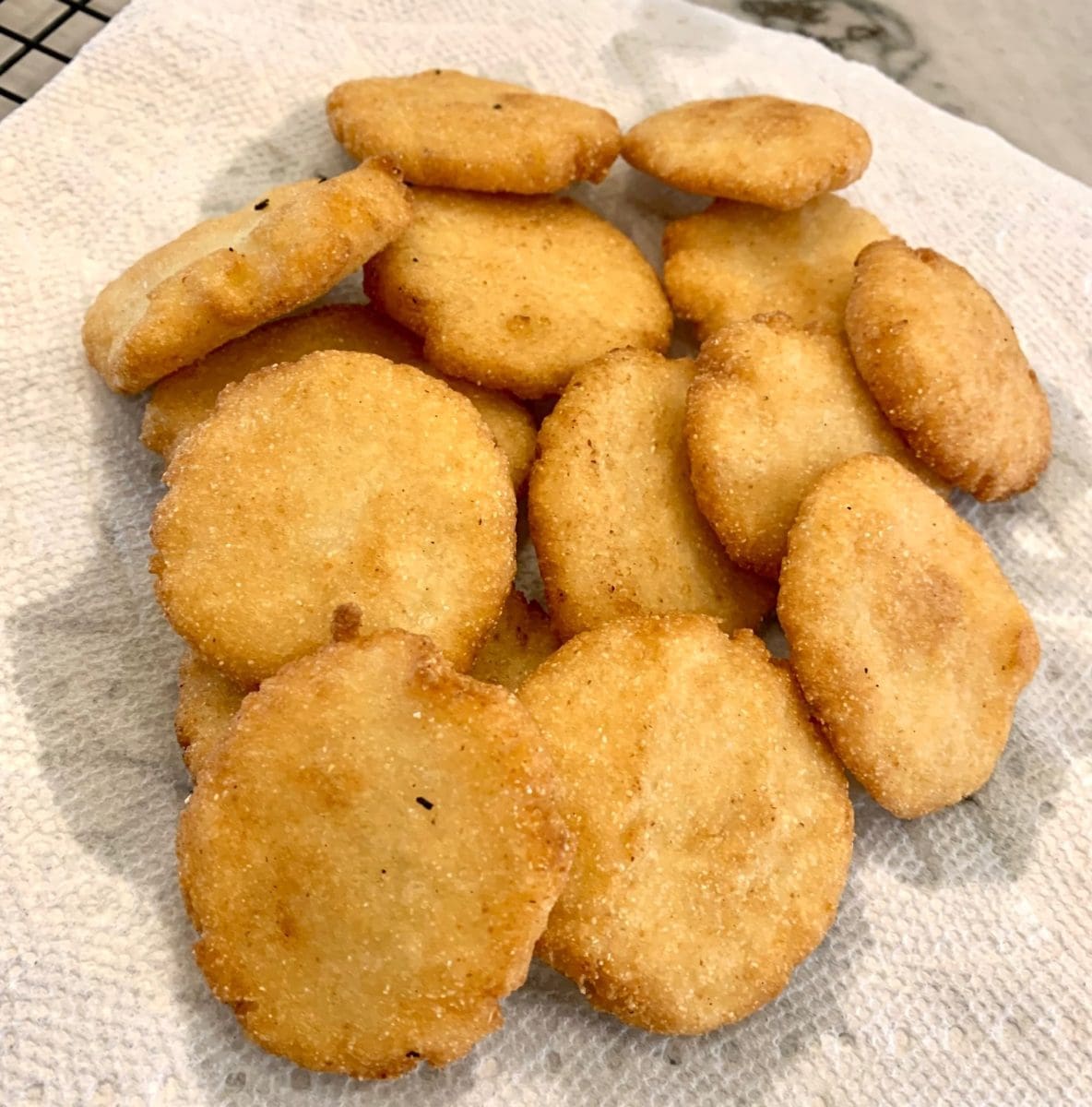
Long before baking powder or self-rising meal made their way into Southern kitchens, there was hot water cornbread. With roots in Native American culinary tradition it may be, in fact, the first cornbread. Born of necessity, this rustic preparation calls for just three ingredients: cornmeal, hot water, and a touch of fat. Yet from those basic components emerges something timeless.
The story of hot water cornbread stretches far beyond the American South. Early English settlers encountered this indigenous preparation and, impressed by its utility and flavor, helped spread its influence across the Atlantic via colonial trade routes. But while its name traveled, its soul remained firmly planted in the American soil—especially in the Deep South. There it became a staple in African American kitchens and a cornerstone of what we now call “soul food.”
I first tasted hot water cornbread at Shirley Mae Beard’s Café in Louisville, Kentucky. Nestled in the heart of Smoketown, the café was a haven of history and hospitality, where the cornbread arrived steaming hot and golden, nestled next to tender pig’s feet, vinegary greens, and pinto beans. That first bite, crispy outside, soft and creamy within was a revelation. This post is my tribute to that experience, and to the legacy of cooks like Shirley Mae who have kept these traditions alive.
The Details
Hot water cornbread doesn’t ask for much—just good cornmeal (yellow or white, take your pick), a pinch of salt, and hot water to bind it all together. Lard is the traditional grease for frying, though oil works fine too. What matters is the transformation that happens in the pan. The sizzling crust forms instantly upon contact with hot fat and seals in the soft interior. The result is a small, golden disc—humble in appearance, rich in character.
This cornbread isn’t sweet. It’s not fluffy, but it’s meant to be buttered, dunked, soaked, and sopped into liquor from greens, the broth of slow-simmered beans, or the spicy drippings of fried meat. It’s a side, yes, but also a food with memory and meaning, connecting kitchens of the past with our tables today.
So here’s to hot water cornbread, born of necessity, sustained by tradition, and perfect in its simplicity. Whether it’s your first bite or not, it’s a dish that reminds you where you came from—and just how good a little cornmeal and hot water can be.
Making Hot Water Cornbread
Following tradition and using what’s available, I put a dollop of butter flavored shortening in the boiling water and used white corn meal!

Place the shortening and water in a pan and bring it to a boil.

Melt the lard in a skillet or heavy bottom pot, ready to fry the cornbread.

Add the boiled water to the cornmeal in a bowl until you have wetted it all, leaving it stiff enough to form patties with your hands.



Carefully place the patties in the bubbling lard and fry until crispy golden on the outside.

Hot Water Cornbread
The first cornbread made with cornmeal, salt, shortening and water
- Prep Time: 20
- Cook Time: 10
- Total Time: 30 minutes
- Yield: 12-15 1x
Ingredients
- 1 cup yellow or white cornmeal
- 1 scant cup boiling water
- 1 tsp sugar
- 1/2 tsp salt
- 1 tsp butter shortening
- Lard – for frying
Instructions
- Place the water on the stove with the shortening and heat until boiling, then turn the heat off until ready to use
- While waiting for the water to boil, place enough lard in a cast iron skillet to fill to about a half-inch depth and turn the heat to medium
- Whisk together the dry ingredients in a bowl and when the water is ready add a little at a time and mix with a wooden spoon until it is all wet, but firm enough to mold into patties
- Portion the dough with the spoon, roll it into a ball and flatten into a thin patty using the palms of your hands and set aside. Repeat until the dough is used up
- Fry in the lard until golden brown, about 2-3 minutes per side, strain out and drain briefly on a paper towel covered rack
- Serve immediately with butter as a side to beans, greens or fried chicken!
